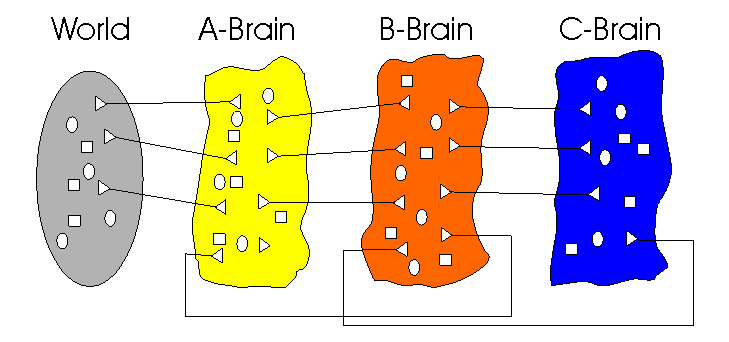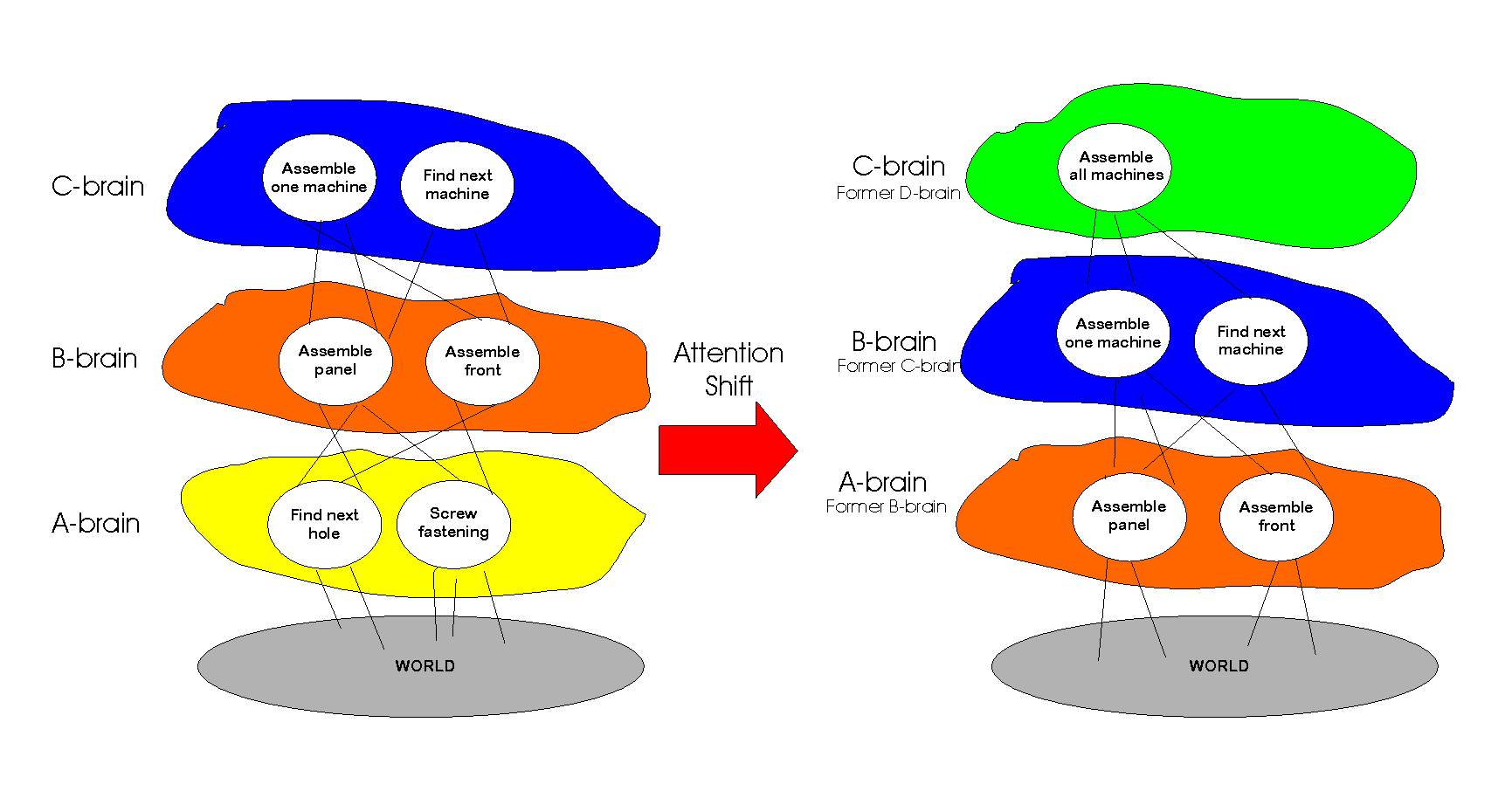
Ricardo A. Garcia
February 24, 2000
The society of mind
An extension in the theory of B-brains and feedback loops
As an extension to the topic in B-brains, I propose the following theory. Think about the case where a person has to assemble multiple machines in a room. Each machine has several parts and has a panel that should be screw fastened.
The A Brain knows very well how to secure a single screw (i.e. align the panel with the hole and put the screw, use the screwdriver to turn the screw, etc). It would be very useful if this A Brain knows also something about the overall process.

The B Brain acts as a manager of A Brain. It doesnít know all the details of how A deals with the screws but it knows if the process is successful, or if A is not being productive.
A summarizes its activities and presents a "report" to B, which contains the main features of A activities. B can control A in the sense of shutting it off, or calling new agencies (or resources) to reinforce.
At the same time, the B Brain has a higher level job (i.e. locate and put screws in all the holes in the panel). It will communicate with A to instruct the "screw fastening", the "hole-panel aligning", and all the other agencies in A. Also, B has the job of presenting a "report" to the C Brain. (also a summary of the activities, that comprises A and B).
One example of the "report" that B would present to C is "3 out of 5 screws have been securedÖ".
B brain will also generate a report with even less detail, that will be sent to the A brain as one of Aís inputs. This information will look as the information from the exterior to A, and in this way, A will be able to have "an idea" of the overall process that is being developed. One example of this information can be "there are more screws to putÖ". The agencies in A know now about the overall process, and have some degree of control (i.e. this information can be used to make B determine which hole is next).
The C brain receives the report from B. It has an even higher level job (i.e. assemble a whole machine) and presents a similar summary or report to the B brain and maybe to the A brain.
With this architecture, we can expect an "infinite" or at least a very large number of brains A, B, C Ö to complete a very complicated task; but I donít believe that. A person is not paying attention to all the details at all times. I believe that the "attention" is related to the number of agencies (or resources) involved in the particular process in a given time. This number has to have a limit (the number of resources in the brain has to be limited, as the number of neurons in the brain is limited). I propose that the brain plays a clever "trick". Letís follow with the example of assembling a room full of machines.
An even higher level task is to "assemble all the machines in the room". This can be managed by a D brain. If the model just allows three levels of linked brains (A,B and C), the brain can switch the attention to the brains B,C and D and change their role.

In this way, the brain can focus in different levels of detail (different agencies or resources) at different times. Following this scheme, it wonít need an infinite succession of linked brains to do complicated jobs.
Also, I donít think that the contents of the brains A,B,C shift or move each time that the attention is shifted. What changes is the role that each brain play in the linked structure. In the figure, the agencies of brain B now communicate with the external world, and B reports to C; C reports to a "new" D brain that wasnít taken in account before.